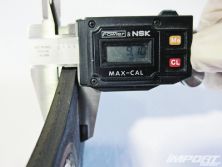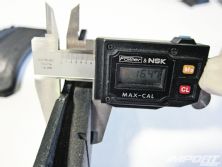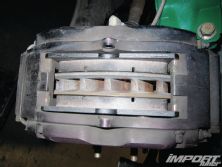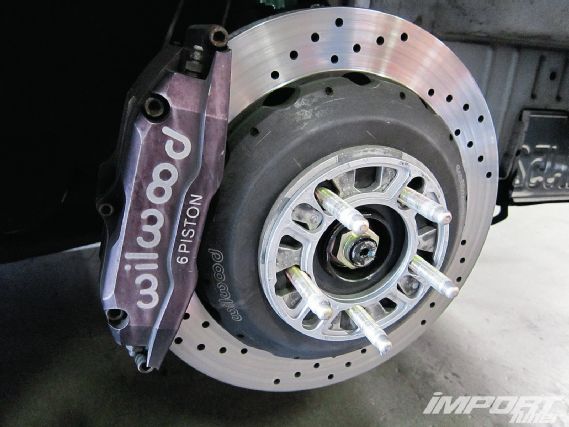 | Do you need brake pads? - Tricks Of The Trade
| Do you need brake pads? - Tricks Of The Trade
Do you need brake pads?
It doesn’t take a genius to understand that disc brake pads and rotors are wear-and-tear items that should be inspected and/or replaced on a periodic basis.
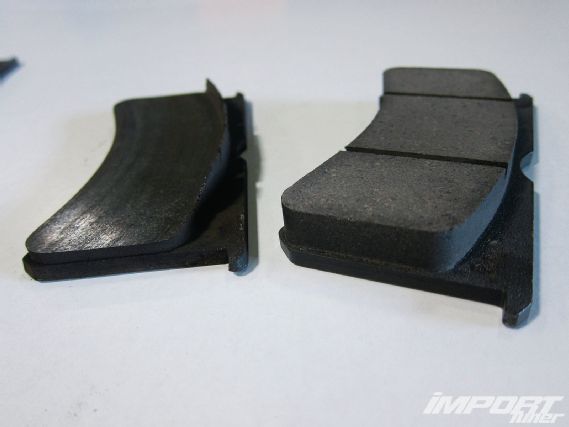 |
Do you need brake pads? - Tricks Of The Trade
|
Do you need brake pads? - Tricks Of The Trade
Depending on how aggressive you drive your car, usually, the first sign of excessive brake pad wear is high-pitched squealing noises. This ear-piercing sound usually comes from the wear indicator that rubs against the brake rotor to alert the driver that a pad change is needed. Other symptoms can include the vehicle suddenly pulling to one side under braking, the brakes aggressively grabbing or vibrating, and the brake pedal feeling soft under load. More serious conditions would include a grinding metal-to-metal sound, which often means that replacement is overdue and the worn brake pads are damaging the brake rotors.
Types of brake pads
Proper selection of friction pads is a critical part of a high-performance disc brake system. It is important to analyze your vehicle’s braking requirements based upon track demands and driver braking tendencies, then select a pad compound, which satisfies these needs. Temperature range and overall friction value are the primary considerations for pad selection. The proper pad compound is usually found through a trial-and-error process, depending on the type of driving you experience.
There are generally four types of brake pads for cars:
Ceramic: These are composed of ceramic fibers, nonferrous filler materials, bonding agents, and possibly small amounts of metal. Lighter in color and more expensive than other brake pads, ceramic pads are cleaner and quieter, and offer excellent braking characteristics without wearing down the rotors.
Low-metallic: These are made from an organic formula mixed with small amounts (10 to 30 percent) of copper or steel to help with heat transfer and provide better braking. With the added metal, there is more brake dust and they may be slightly noisier.
Non-asbestos organic: This type of pad is made from fibers, such as glass, rubber, carbon, and Kevlar, with filler materials and high-temperature resins. These pads are softer and create less noise, but they wear faster and create more dust.
Semimetallic: These pads contain anywhere from 30 to 65 percent metal, typically including chopped steel wool or wire, iron powder, copper or graphite mixed with inorganic fillers, and friction modifiers that bond all the ingredients together. These pads are more durable and have excellent heat transfer for street/track cars, but also wear down rotors faster, can be noisy, and may not perform optimally at low temperatures.
Wilwood Compound Selection
The most popular Wilwood brake pads used for street/weekend track duty are the Polymatrix BP-10 or BP-20 Smart Pad compounds. The BP-10 pad uses a metallic composite friction compound. It possesses the medium to high temperature range friction characteristics of a metallic compound race pad, with the quieter engagement, lower dust, and positive low temperature response of a street performance pad.
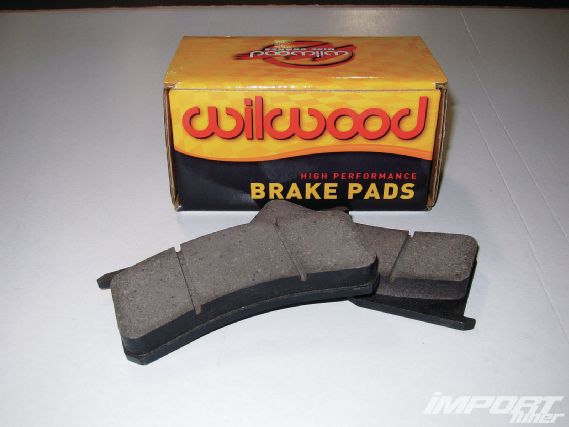 |
Do you need brake pads? - Tricks Of The Trade
|
Do you need brake pads? - Tricks Of The Trade
Visual inspection/caliper measurement of the used pads showed severe wear to both front pads after a few weekend track days.
The Polymatrix BP-20 pads, installed on our ’03 Subaru WRX, provide increased friction levels with extended temperature range over BP-10. The pad provides a medium friction compound with low to moderate squealing noise and dust for a street-performance pad, but also offers increased friction characteristics of a semimetallic race compound.
Wilwood also offers a more aggressive “race only” BP-30 pad that is ideal for SCCA club racers, rally, and autocross vehicles. The “Q” Polymatrix pad is also available for those looking for longevity with minimal noise and dust. The “PM” ProMatrix was designed for those looking for aggressive pads for use on OE calipers on either OE or upgraded rotors. Always check the owner’s manual for any brake-related recommendations, including pad replacement intervals.
Phoenix V-12 Brake Bleeder
Bleeding the brakes is one of the most important procedures when replacing/upgrading your brake system. The Phoenix V-12 brake bleeder system is ideal for people who service their brake system more than once a year. The V-12 provides an easy-to-use rubber grip with a smooth pump action to properly bleed the system. In addition to bleeding the brakes, the V-12 is also designed to inexpensively perform RFI, vacuum/pressure bleeding, and master cylinder bench bleeding and is designed to be compatible with all types of brake fluids including DOT 3, 4, 5, and synthetic blends. The chassis is made of high-strength Zytel (glass-reinforced nylon) for increased durability. We completed our brake job by flushing the system with two bottles of Motul RBF-600 DOT 4 brake fluid before remounting the wheels.
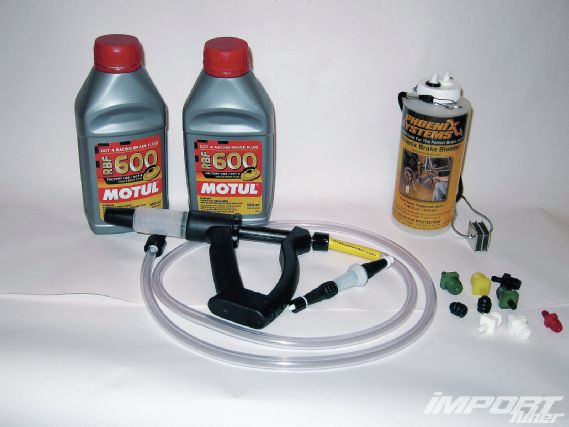 |
Do you need brake pads? - Tricks Of The Trade
|
Do you need brake pads? - Tricks Of The Trade

